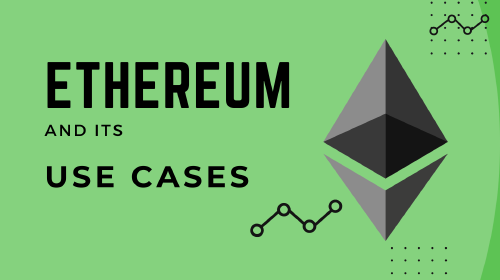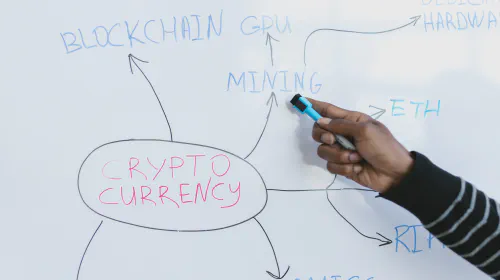Ethereum Gas Fees: What You Need to Know
Salomon Kisters
Jan 25, 2023This post may contain affiliate links. If you use these links to buy something we may earn a commission. Thanks!
Ethereum gas fees are an important concept to understand when using Ethereum.
There will be “gas” involved if you wish to use the Ethereum blockchain. These fees are paid to miners in exchange for executing smart contracts and transactions on the Ethereum blockchain.
The amount of gas required for a transaction can vary depending on the complexity of the transaction, and miners will charge a fee for their services. For example, performing a simple transaction might use less gas than a more complex transaction, like a token swap or a smart contract.
Gas fees are paid in ETH and the amount charged by miners can vary depending on network demand.
Gas fees are what each user pays to carry out a transaction or other activity on the Ethereum blockchain. Transaction costs are charged by the majority of blockchain networks to their users, and these fees can be greater or lower than those of Ethereum.
Understanding Ethereum gas fees is essential to using the Ethereum blockchain, and it’s important to make sure you’re aware of their implications before executing a transaction.
But how does this gas work and for what purpose? Let’s find out in more detail!
What is Gas?
For a user to interact with the network, the network needs a certain number of Ether (ETH), the native currency of Ethereum. This amount is known as “gas.”
These fees are designed to pay Ethereum miners for the energy expended in transaction verification and to add a layer of protection to the Ethereum network by making it too expensive for spammers to spread their harmful code throughout the network.
Gas fees are everyone’s least favorite aspect of Ethereum, even though they are an efficient way to motivate miners to continue confirming transactions and upholding network security.
This is because gas costs can be outrageously expensive when the network is crowded. Usually, miners receive payment in the native cryptocurrency of the blockchain.
While paying for gas is a must for blockchain transactions (you cannot perform any transaction without it), the price of gas itself is extremely unpredictable and depends on a wide range of factors. Only Ether (ETH), or ERC-20 tokens, which are Ethereum’s native currency, can be used to pay fees.
The price of ETH gas is expressed in a unit known as “gwei.” A gwei is equivalent to 0.000000001 ETH.
How are Ethereum Gas Fees Calculated?
We should first comprehend the idea of gwei to grasp how Ethereum gas is calculated.
The cost of gas is measured in gwei, a very tiny unit of Ether (1 gwei = 0.000000001 ETH). A gas fee of 30 gwei, for instance, would be equal to only 0.000000030 ETH.
Ethereum gas costs are determined by the following formula:
Total Gas Fee = Gas units (limit) x (Base fee + Tip)
Gas Units (Limits)
This term describes the maximum quantity of gas you will spend on a single transaction. You can change the amount of gas your transaction will cost, but you should do it wisely. This is because various transactions with the Ethereum blockchain will require varying amounts of gas to be successful.
Nevertheless, Ethereum will only consume the precise quantity of gas required to complete the transaction in question. Your wallet will be credited with any shortfall between your gas cap and the actual quantity of gwei required.
While this is processing, if you set your gas limit too low, your transaction will probably fail and you’ll lose out on wasted gas money that you’ll never be able to get back.
The amount of gas units has to be multiplied by the gas price to get the total gas fees. The gas price consists of the base fee and the tip.
Base Fee
The base fee is the minimal gas price needed to record a transaction on the Ethereum blockchain. No matter what kind of transaction it is, the amount of gas needed for a base charge is decided by the desire for it to be included.
To lower the supply of ETH in circulation, these basic fees are subsequently burned. When a currency or token is burned, it is permanently removed from the total supply.
Base fees are continuously modified depending on the number of users connecting with the network at any given moment since they are a demand-driven component.
Tips
Also referred to as a priority fee, tips are an extra cost added to your transaction to speed up completion. Because it offers an incentive for Ethereum miners to verify your transaction ahead of others, this charge is more commonly referred to as a tip.
A priority charge is connected to each transaction that a miner confirms, and they are rewarded with that fee as compensation. Miners prefer executing a transaction with the biggest tips attached to maximize their profits since they can see which transactions involve tips.
What are Gas Fees For?
Transactions on the blockchain do not occur automatically. The execution of every transaction requires a substantial amount of computing resources.
The gas fees are essentially the compensation paid to miners for confirming transactions and putting them into the blockchain, a procedure that takes time and effort. Therefore, the gas fees serve as an incentive to encourage individuals to start mining and contribute to preserving the reliability of the decentralized ledger.
They help to protect the Ethereum network as well. Every transaction must include a charge to avoid inadvertent infinite loops and malicious people from threatening the security of the network.
How Do Gas Fees Work?
To properly complete any cryptocurrency transaction, the transaction must be confirmed before it is uploaded to the blockchain. The critical role of transaction verification is carried out by people that stake Ether on the Ethereum network, and they are compensated with gas costs for each transaction they confirm.
In general, there will be a larger cost for complex transactions like using smart contracts or paying for decentralized apps (also known as dApps).
Transaction processing can take some time, however, and users can pay a priority charge, often known as a tip, in addition to the gas price to encourage miners to validate their transactions more quickly.
While gas fees raise the cost of a transaction on the Ethereum network, they do have a critical function: they increase user security on the Ethereum blockchain. Because each transaction has to be paid for, Ethereum is less appealing to hackers who could try to flood the system with requests.
In addition to enhancing cybersecurity, charging potential hackers helps the network operate more effectively by preventing spammers from clogging up bandwidth.
Why ETH Gas Fees Fluctuate
Ethereum gas fees are often primarily influenced by the supply and demand among the network’s validators. This implies that if the gas price doesn’t satisfy their requirements, they can refuse a transaction.
Additionally, it implies that the availability and demand for processing capacity affect how much gas costs.
The “Ethereum gas price” enters the picture here. How much you’re ready to spend on a transaction is determined by your gas price and gas limit. You can inform the Ethereum verifiers that a transaction requires more effort by increasing the tip, which increases the gas price.
However, if you make the gas limit too low, validators might reject your transaction. This explains why gas prices are so high at a certain time and day.
The most costly and crowded times are during the daily hours of 8 am to 1 pm (EST). This is hardly surprising given that everyone is awake and working in Europe and the US at that time.
The weekday period between midnight and 4 am in the morning (EST), when the majority of America is asleep, Europe is just beginning its day, and Asia is wrapping up its workday, is when the price of ETH gas is cheapest.
When ETH gas costs are at their lowest, which is on a Saturday or Sunday between 2 am and 3 am (EST), it is the optimal time to participate in an exchange transaction.
On the other hand, Tuesdays and Thursdays are the most expensive days since this is the time when the network is most congested and gas prices are the highest.
Who Gets Gas Fees?
Gas fees benefit people who maintain and secure the Ethereum network.
Gas fee distributions accrue to Proof-of-Work (PoW) miners on the Ethereum protocol on the execution layer of Ethereum (previously known as Ethereum 1.0).
Gas fees are, thus, allocated to individuals staking ETH to support this revised Proof-of-Stake (PoS) variant of Ethereum on the consensus layer of Ethereum (previously known as Ethereum 2.0).
Why is it Important to Understand Ethereum Gas Fees?
The Ethereum blockchain network is among the most prominent blockchains for hosting decentralized apps, or dApps, and smart contracts. The Ethereum blockchain is known for being pricey and unresponsive to use, though.
Compared to the Bitcoin blockchain network, for instance, the average transaction cost on the Ethereum network is often higher.
Users of the Ethereum blockchain who wish to finish a transaction quicker can simply give a higher tip. Conversely, users who wish to reduce their gas costs should pick periods when network activity is comparatively lighter.
Those who don’t mind a sluggish transaction speed can also leave a smaller tip.
The Bottom Line
ETH gas can be used for transmitting ETH or ERC-20 tokens via the Ethereum network or, based on the transaction’s goals, for enabling smart contracts.
Due to the London Upgrade, customers can now contribute more substantial tips to help optimize their transactions. Gas prices fluctuate depending on the amount of network traffic present at any one moment.
Although the much-anticipated update to Ethereum’s new Proof-of-Stake blockchain promises improved efficiency on several fronts, it is unlikely to lower gas cost
Stay informed with the latest insights in Crypto, Blockchain, and Cyber-Security! Subscribe to our newsletter now to receive exclusive updates, expert analyses, and current developments directly to your inbox. Don't miss the opportunity to expand your knowledge and stay up-to-date.
Love what you're reading? Subscribe for top stories in Crypto, Blockchain, and Cyber-Security. Stay informed with exclusive updates.
Please note that the Content may have been generated with the Help of AI. The editorial content of OriginStamp AG does not constitute a recommendation for investment or purchase advice. In principle, an investment can also lead to a total loss. Therefore, please seek advice before making an investment decision.

Who Runs Ethereum? Understanding Decentralized Governance
Ethereum has a decentralized governance model, with stakeholders like Ether holders, developers, and miners contributing to decision-making.

Ethereum: Decentralized Blockchain Platform & Use Cases
Learn about Ethereum, a decentralized blockchain platform with smart contract functionality. Explore its use cases, how to buy Ether, and the benefits of OriginStamp.

What Is Ethereum Classic, and Does It Have a Future?
Most people confuse Ethereum and Ethereum Classic to be the same thing. They are not.
Protect your documents
Your gateway to unforgeable data. Imprint the authenticity of your information with our blockchain timestamp